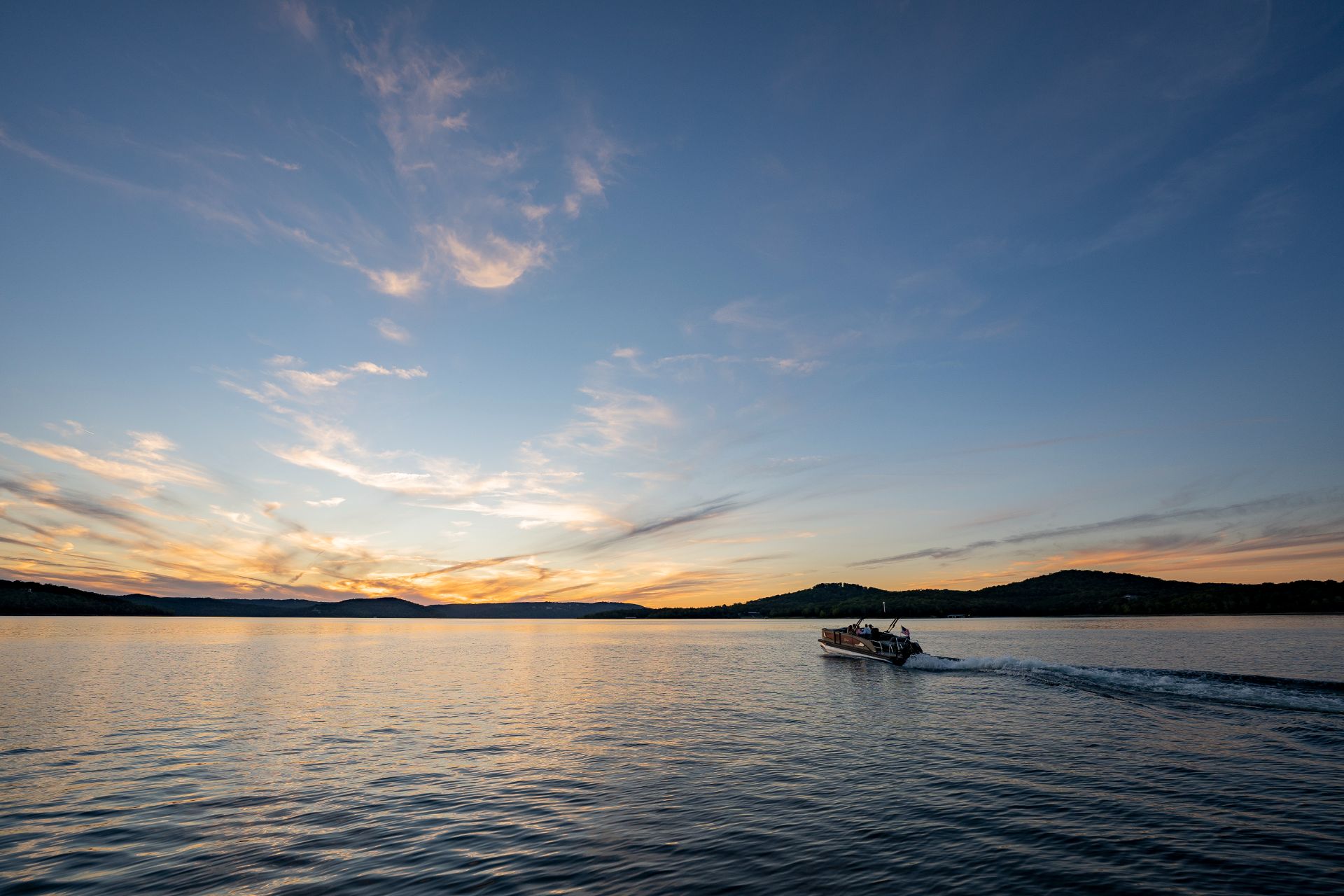No matter what kind of machine you’re fueling, it should go without saying that precautions should be taken. Fueling your boat is not exempt from this. In some cases, fueling a boat can be risky if you don’t know what you’re doing.
This is because the mechanics of a boat versus a vehicle are much different. Although there is a significant difference between the two machines, both (typically) need fuel to operate. Whether you’re pumping at a marina or using handheld gas cans, there are steps to take to ensure a safe fuel up.
It is important to consider safety every single time you gas your boat up. It can turn into a very serious situation quickly if you’re not careful. Follow this article to know the best steps to take when putting gas in your boat.
Before You Get Gas
There are a few things to think about before heading to your local on-water gas dock or gas station. Knowing these facts in advance will save you time and make your fueling experience easier for everyone involved.
First, you need to know exactly what kind of gas your boat requires. Just like vehicles, different kinds of boats require different kinds of gasoline for the motor to run properly. Some require diesel fuel and others require fuel that has low levels of ethanol. Researching this prior to heading over to the gas dock or gas station will make things much simpler.
Next, locate where the gas cap is on your boat. Some boats have a single gas cap on one side of the boat. Others are located in the middle of the stern of the boat. Some boats are equipped with gas caps on both the port and starboard sides. Make sure to know exactly where yours is in advance.
And finally, figure out where you want to fill your boat up with gas. You have three options; go to an on-water gas dock which is typically your local marina, trailer your boat to a gas station, or carry portable gas cans to your boat.
Whichever category you fit into, be sure to map this out before taking off to fuel up. For instance, our marina has limited hours during the week, so if I’m low on fuel, I always check to make sure they’re open before taking off from the dock.
Typically, gas docks are the popular option. However, not every body of water has a gas dock. If this is the case, you’re stuck with either trailering your boat to a gas station or carrying portable gas cans to your boat.
If you have an answer for all of these steps, you’re ready to start filling your boat up with gas. Considering all these things prior to gassing your boat up will reduce possible stress and distraction while you are gassing up.
Time to Pump
Let’s go over the different scenarios depending on how you get gas. Although there are similarities, it’s good to know the differences. This will help keep everyone safe while spending time on the water.
Gas Dock
We’ll start with the most ideal situation for most, a gas dock. Although gas docks are typically pricier than your local gas station, they are the most convenient option. This is typically the safest option as well.
When you pull up to the marina, first make sure there’s room on the gas dock for your boat. Once you tie up the boat, it’s important to shut the motor off. It is also important to shut off all electricity and power that is running through the boat.
Before you start gassing your boat up, make sure there are no flames or heat sources anywhere near the boat. This includes any smokers that may be on board lighting up while you’re at the marina.
Next, unload all passengers from the boat. The only people that need to be on the boat or near the boat are those directly involved with gassing the boat up. Other people should stand back in case there were to be an accident of any sort.
Now that you’re ready to begin gassing your boat up, let the dockhand know how much gas you would like to put in your boat. Most gas docks don’t have automatic stoppers on them. Many times, boat fuel tanks are not the same as the fuel tank found in your vehicle so automatic stoppers don’t always work.
Boat fuel tanks are vented whereas the fuel tanks found in vehicles are sealed. For this reason, it can be dangerous to fill your boat up with an automatic stopper since it won’t allow enough space in the tank for the vapors.
This is why it is important to fill the gas tank to the recommended limit. Lucky for those with access to a gas dock, this is normally pretty easy to do. You can focus all your attention on the fuel pump. It is always important to be very attentive while dealing with something as flammable as gasoline. Fueling your boat up is no exception.
Gas Station
The next option for filling your boat up with gas is trailering your boat to a gas station. This is a quick and easy way to fill your boat up if you don’t have access to a gas dock or just prefer the lower prices of a gas station.
As long as you are comfortable towing a trailer, this shouldn’t be a terrible option. It doesn’t hurt to jump in your boat prior to putting gas in it to make sure all power is shut off. This is just another step towards safety while fueling.
Next, make sure nobody is in or near the boat. Just in case of an emergency, it never hurts to be cautious. Something to remember when you’re at a gas station is that these pumps are meant for cars.
As I stated before, cars and boats have different fuel tanks and systems. When filling a boat up at a gas station, it’s important to not use the automatic stopper. Since boat fuel tanks are ventilated, if you use the automatic stopper, the gas will fill too much of the tank.
When the tank is too full, you risk the vapors expanding and causing an explosion. Obviously, this would be very bad if it were to happen. This is why it is so important to exercise caution when putting gas in your boat at a gas station.
Portable Gas Cans
The final option is to use portable gas cans. This is a popular alternative to trailering your boat to a gas station every time you need gas and is typically more affordable than going to a marina. Although in a sense they are more convenient, they are very heavy when full.
Portable gas cans need to be housed in a cool, shaded place. A good place is a detached garage or shed. It is extremely important that you do not leave gas cans out in the sun. Gasoline expands when it heats up and could cause so much pressure inside of the can that it explodes.
As long as these gas cans are properly taken care of, they are easy to handle. So, you take your gas cans down to the dock and get ready to gas up your boat. It’s easiest to do this if the boat is stationary. Make sure it is either on a lift or tied securely to a dock.
Make sure your dock is level and secure. There are tools that can make pouring the gas into the boat a lot easier than pouring straight from the can. Tools such as a funnel or siphon. Both make pouring gas into the boat a lot easier, and you greatly reduce the risk of a spill.
Always be sure to keep an oil-absorbent towel with you whenever putting gas in your boat. Especially when using gas cans, having an oil-absorbent towel is necessary as small spills can easily happen. No matter where or how you are gassing your boat up, having one of these towels near is a good idea.
The biggest concern with using gas cans is how easy it is to spill. Always use caution and be attentive to reduce the chances of risks.
After Fueling
Don’t get ahead of yourself when you are done fueling your boat up. There are a number of safety steps you’ll want to go through first. The first step you’ll want to do is to make sure that you haven’t spilled any gasoline.
Check all around the spot you were fueling and clean up any spills. Hopefully, if you followed my directions from earlier, you won’t have to worry about a spill. Although, they sometimes do happen so it’s better to always be prepared.
After checking the exterior of your boat and the area around your boat, be sure to check the inside of your boat. Look in the bilge to make sure that no gas is leaking into the boat. Also, check the bilge for any kind of gasoline smell. This could indicate a leak somewhere in the boat.
If you suspect a leak somewhere in your boat, DO NOT TURN IT ON. Make sure to keep all power to the boat off until someone who is qualified can check the boat over. This could turn dangerous very quickly, so it is extremely important to not ignore these signs.
Now, you’re about ready to get your boat back out on the water. The final step is to run the blower for a handful of minutes before starting the engine. This is critical to clearing the engine compartment of flammable fumes from the gasoline.
Not all boats have a blower, this is determined by whether the motor is an inboard, I/O, or outboard. Inboards and I/O’s will have a blower because the motor is under the boat. Outboards will not have a blower since they are not in a compartment but rather out in the open where fumes can dissipate easily on their own.
I can’t stress this enough if your boat is equipped with a blower, make sure to run it for 4-5 minutes before starting the boat up. This will ventilate any flammable fumes from the engine and engine compartment. It is always good to run your blower for a handful of minutes before turning your boat every time you go to start your boat regardless of if you just fueled up or not.
Be Safe When Handling Fuel
If you follow these safety measures and precautions, the likelihood of an accident is much reduced. However, fuel is highly flammable and for that reason, this practice should always be taken seriously.
Fuel around boats needs extra care because of how boats are built. It is important to always practice safety and make sure you follow the guidelines above. This will help keep everyone around you safe.



